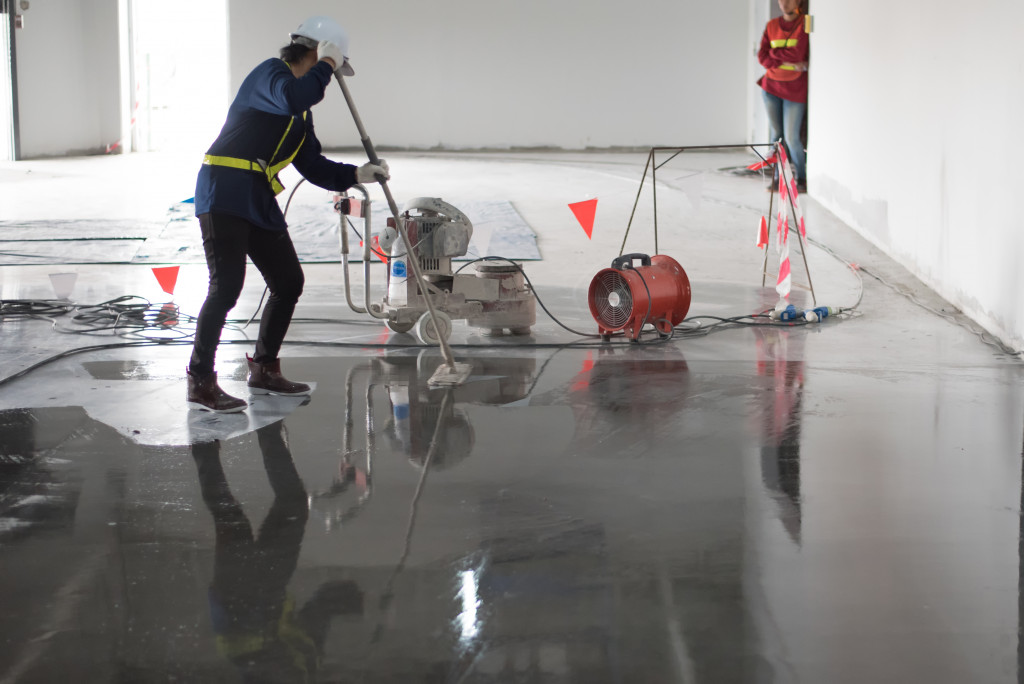- U.S. warehouses play a crucial economic role, facilitating efficient product distribution.
- Common warehouse inefficiencies stem from poor layout, understaffing, inadequate training, and outdated technology.
- Proper organization, adequate staffing, comprehensive training, and modern technology can enhance warehouse efficiency.
- Warehouse renovations like resilient doors, smooth flooring, adjustable racking, and automation can bolster productivity.
- Improving warehouse efficiency boosts business operations and customer satisfaction, underlining a successful enterprise.
Is your warehouse not working as efficiently as it could be? Are you consistently missing delivery deadlines or finding it challenging to manage inventory? These issues can be frustrating but can also seriously impact your bottom line. Here’s a look into U.S. warehouses, why your warehouse is inefficient, and ways you can renovate your warehouse for better efficiency.
Warehouses in The U.S.
It’s estimated that 25,000 warehouses in the U.S. are responsible for storing and distributing goods all over the country. Warehouses come in various sizes and configurations, ranging from small local operations to large corporate hubs.
Regardless of size, warehouses are essential in keeping our economy functioning. They facilitate the transportation of products from manufacturers to stores, helping businesses meet consumer demands quickly and efficiently.
Reasons For Inefficient Warehouses
There are various reasons your warehouse is inefficient. Here are some of them:
1. Poor Layout
One of the biggest reasons warehouses struggle to operate efficiently is their inefficient layout. When items are not stored optimally, it can be difficult to retrieve them quickly, and this can cause delays in the shipping process. To solve this issue, consider reorganizing your warehouse based on how frequently certain items are accessed. This can help you create an intuitive space that makes it easy for staff to find the needed items.

2. Understaffing
Another common issue is understaffing. When warehouse staff are overwhelmed or understaffed, it can lead to mistakes, missed deadlines, and other issues that can impact your operations. To solve this issue, ensure you have enough staff to handle all the necessary tasks. You may also want to consider implementing a system that allows staff to communicate with each other easily so that they can coordinate their efforts.
3. Inadequate Training
Training is another key factor that can impact warehouse efficiency. When staff are not properly trained, they may waste time figuring out how to complete a task or accidentally damage products or equipment. To solve this issue, ensure all staff receive comprehensive training on warehouse safety, product handling, and other key topics. You may also want to hold regular training sessions to refresh their knowledge and skills.
4. Technology and Equipment Issues
Finally, technology and equipment issues can also cause inefficiencies. For example, if your warehouse doesn’t have a modern inventory management system, keeping track of products and ensuring that they are adequately stocked can be challenging. Similarly, outdated equipment can slow down production and lead to costly breakdowns. Invest in modern technology and equipment designed specifically for warehouse use to solve this issue. This can improve accuracy, reduce downtime, and increase overall efficiency.
Renovation Options
You can renovate your warehouse to be more efficient. Here are four simple but effective renovation options:
Doors
The doors you use in your warehouse can make a huge difference in how products go in and out of storage. It can also affect how employees move around the warehouse. This is why your double doors should have a continuous door hinge. This door hinge is more resilient than a regular hinge and can help improve safety and speed.

Flooring
Your warehouse flooring is also an essential factor in efficiency. Make sure the floor is smooth, slip-resistant, and easy to clean. This will enable staff to quickly move around without worrying about slipping or tripping on debris. It can also make it easier to keep the warehouse clean.
Racking
Racking systems can help you organize and store items more effectively. Invest in adjustable racks that allow for easy access and maximum storage capacity. This will make retrieving items quicker and more accessible, increasing efficiency.
Automation
Finally, consider automating specific tasks such as inventory tracking or order processing. Automating these tasks can reduce errors, improve accuracy, and increase efficiency. Plus, it can help free up staff time to focus on other tasks requiring more attention. If you want to see good proof of automated warehouses, look into Amazon warehouses. They are far more efficient than traditional warehouses and far cheaper to maintain.
Warehouse efficiency is critical to ensuring the smooth operation of your business and meeting customer expectations. Addressing common issues and outdated technology can significantly improve your warehouse’s productivity. Simple renovations like upgrading your doors and flooring, optimizing your racking systems, and implementing automation can substantially improve your warehouse operations. Always remember a well-run warehouse is a cornerstone of a successful business.

